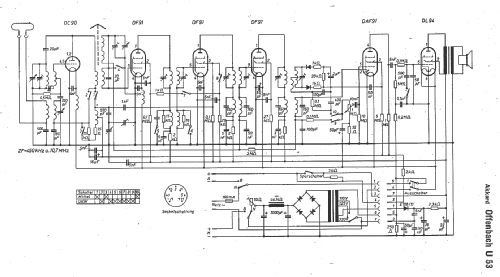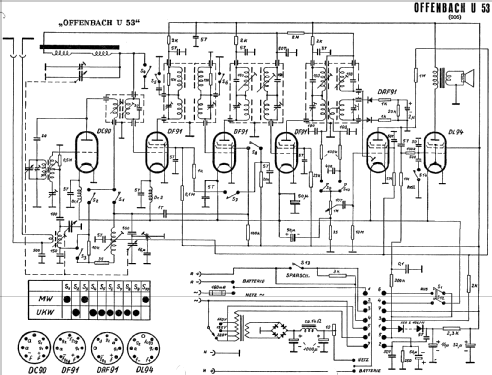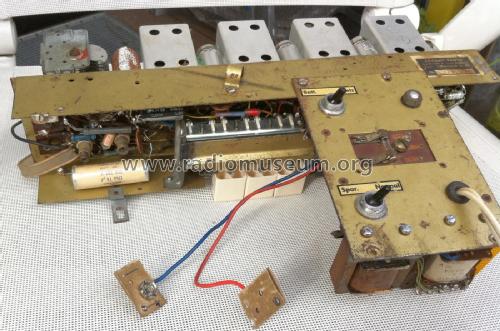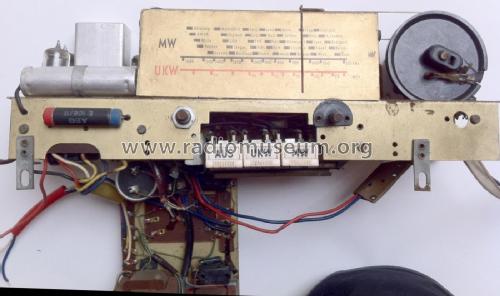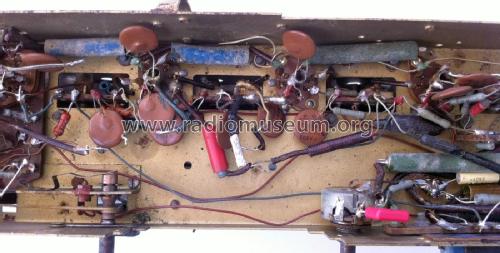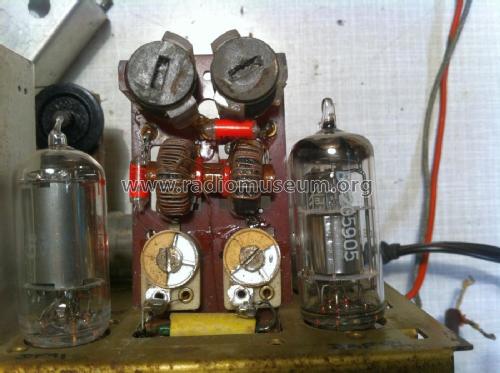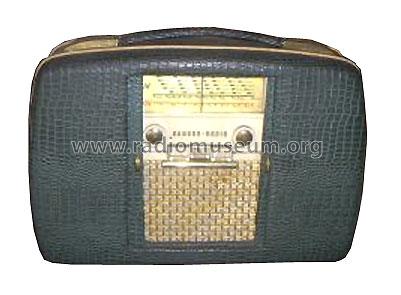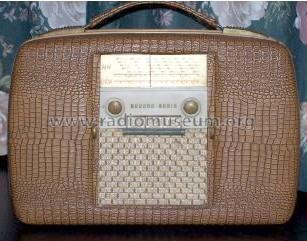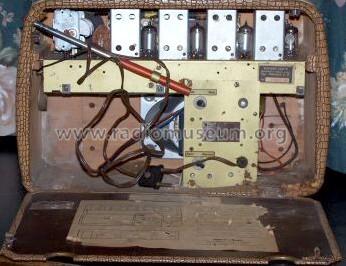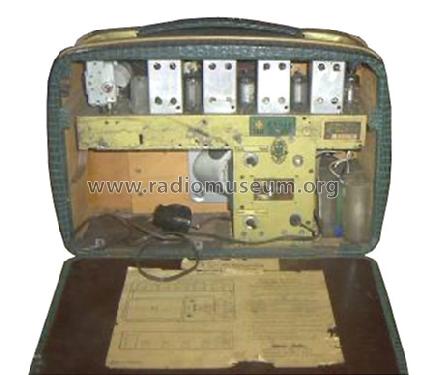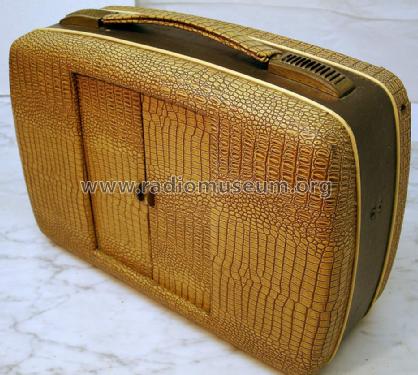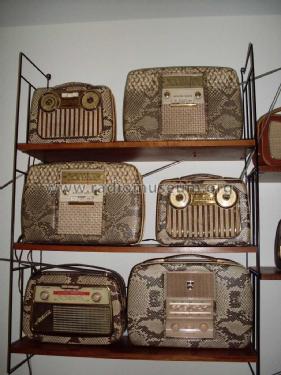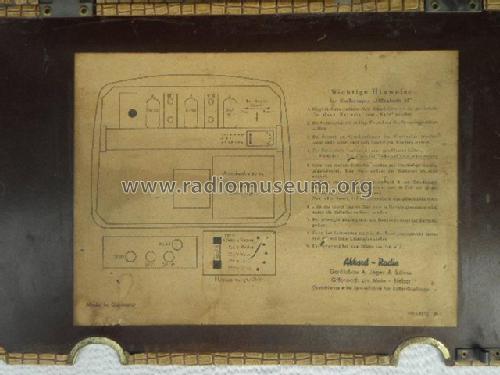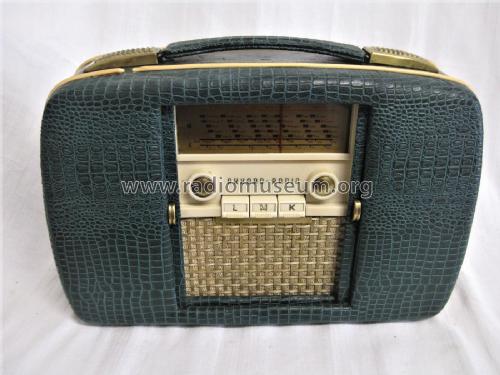Offenbach U53 Kunstleder
Akkord-Radio + Akkord Elektronik (Radios)
- Country
- Germany
- Manufacturer / Brand
- Akkord-Radio + Akkord Elektronik (Radios)
- Year
- 1953/1954
- Category
- Broadcast Receiver - or past WW2 Tuner
- Radiomuseum.org ID
- 323
Click on the schematic thumbnail to request the schematic as a free document.
- Number of Tubes
- 6
- Number of Transistors
- Main principle
- Superheterodyne (common); ZF/IF 470/10700 kHz
- Tuned circuits
- 7 AM circuit(s) 10 FM circuit(s)
- Wave bands
- Broadcast (BC) and FM or UHF.
- Power type and voltage
- Line / Batteries (any type) / 110; 125; 220 / D: 4 x 1,5 & 90 Volt
- Loudspeaker
- Permanent Magnet Dynamic (PDyn) Loudspeaker (moving coil)
- Material
- Leather / canvas / plastic - over other material
- from Radiomuseum.org
- Model: Offenbach U53 [Kunstleder] - Akkord-Radio + Akkord
- Shape
- Portable set > 8 inch (also usable without mains)
- Dimensions (WHD)
- 370 x 240 x 128 mm / 14.6 x 9.4 x 5 inch
- Notes
-
Ratiodetektor mit Germanium-Dioden. Eingeb. Ferritantenne plus Teleskop-Stabantenne. Wechselstromgerät plus Batterien (Anodenbatterie Emce 760 und 4 Monozellen, Total DM 22.70);
3 Drucktasten; Schiebetüren an der Vorderseite. Schwundregelung auf 3 Röhren. Lautsprecher Perm.-dyn. 14 x 8 cm; Sicherungen 0,16A, Trockengleichrichter E106/11, Verbrauch bei Netzbetrieb = 8 Watt. Das Modell gibt es noch in Leder, als Offenbach 53 ohne UKW (LW, MW, KW) und als Exportausführung Offenbach 53 mit MW und 2x KW.
- Net weight (2.2 lb = 1 kg)
- 6.7 kg / 14 lb 12.1 oz (14.758 lb)
- Price in first year of sale
- 275.00 DM
- Source of data
- Kat.d.Rundf.GrossH.1953/54 / Radiokatalog Band 1, Ernst Erb
- Circuit diagram reference
- Lange Schaltungen der Funkindustrie, Buch 1
- Other Models
-
Here you find 200 models, 181 with images and 140 with schematics for wireless sets etc. In French: TSF for Télégraphie sans fil.
All listed radios etc. from Akkord-Radio + Akkord Elektronik (Radios)
Collections
The model Offenbach is part of the collections of the following members.
Forum contributions about this model: Akkord-Radio +: Offenbach U53
Threads: 1 | Posts: 3
Hallo,
ich habe dieses Gerät von einem Bekannten zur Reparatur.
Leider sind alle Röhren durchgebrannt. Kennt jemand dieses Problem?
An Netz betrieben messe ich an der Heizspannung 15V Gleichspannung. Die Röhren sind aber parallel, also 1,4V.
Ist das Gerät hier verbastelt?
Gruß
PBr
Peter Breu, 26.Jul.12
